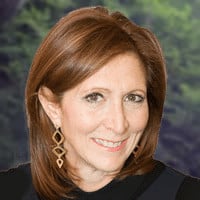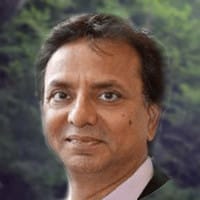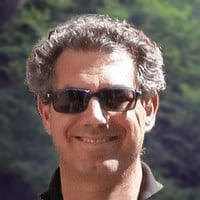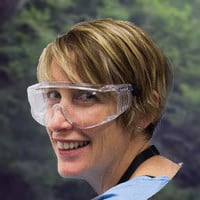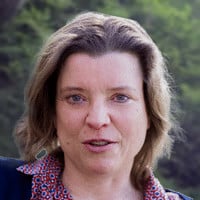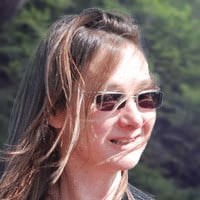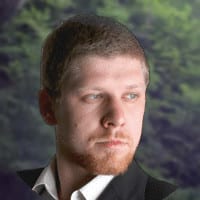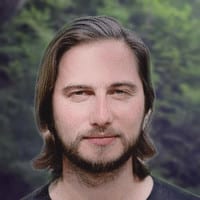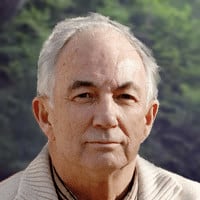Youssef Travali

Dr. Youssef Travaly (PhD, MBA) is the Next Einstein Forum Vice-President of Science Innovation & Institutional Partnerships. Youssef holds an MBA together with a PhD in Materials Science. He has extensive experience in a variety of sectors including semiconductor and biomedical research, low carbon circular economy and climate change.
“We are here to celebrate science. The transformative power of science in Africa.” So began this year’s Next Einstein Forum, held in Rwanda at the end of March. This is the largest scientific gathering to ever take place in Africa, and its aim is to link African researchers around the world, and build the beginnings of a knowledge-economy which will transform the entire continent, and nurture its scientific talent.
Dr Youssef Travaly, the Vice President of Science, Innovation, and Partnerships for the Forum, holds a PhD, and has studied in Belgium, the US, and Senegal. Now based in Rwanda, he is an integral part of building this new community of inspiring African scientists.
Dr Travaly spoke to Traces.Dreams about the intricacies of the Next Einstein Forum, and what they are trying to achieve.

Nerina: At the end of March, the African scientific community met in Kigali, Rwanda, for the Next Einstein Forum Global Gathering 2018. Here are some impressions:
Global Gathering Intro: Listen carefully, and you will hear the voice of an ancient land; sometimes it whispers, sometimes it sings. Its thousand hills tell stories of triumph and dignity. Listen carefully, and you will hear its heart beating—alive with possibility.
Mr. Thierry Zomahoun: We are here to celebrate science—the transformative power of science in Africa. We are here today to celebrate the contributions of Africa to global science. And we are here to celebrate the achievement of some of Africa’s brightest minds, and scientific minds.
Prof. Neil Turok: This is the largest scientific gathering ever held in Africa. The next Einstein must embody both the humanity and wisdom of Mandela—possibly the greatest leader of the 20th century—as well as Einstein.
H.E. Paul Kagame: The gender gap in science is a global phenomenon, but that is no reason to accept it as inevitable. Opportunity will never be equal without equal access to knowledge.
Ms. Temie Giwa-Tubosun: 1 in 22 pregnant women in Africa will die by the time they give birth to their child, so Life Bank is trying to solve that.
Dr. Justus Masa: It is better to be forward-looking than looking backwards.
Prof. Dr. Klaus Von Klitzing: If you have the freedom to ask questions—this is very important for a scientist—you have the freedom to follow a new direction.
Dr. Tom Kariuki: We want a leader to have ethical behaviour.
Dr. Connie Nshemereirwe: A collaborative leadership is a much better model, so I would like to think that the next generation of leaders are going to appreciate this.
Dr. Genya Dana: When we think about ‘precision medicine’, we often think about it as a developed country kind of approach, and look at: ‘How do you think about precision medicine in low resource environments?’ for example.
Dr. Anne Therese Ndog Jatta: One thing we have in sub-Saharan Africa: the sunlight, bringing nature closer to human beings.
Dr. Rocio A Diaz Chavez: Particularly important for the circular economy is the life-cycle assessment.
Dr. Vincent Biruta: Even if we have very good examples of circular economy in our businesses, in our industries, what we need to do is to be able to have an industrial symbiosis.
Mr. Hans Bolscer: I don’t think industry is against complicated regulations; they know how to handle that. Be fierce to industry, impose your standards, and make a renewable business case a profitable business case.
H.E. Paul Kagame: The future we want is as bright as we want it.
Youssef: We commit to adopt a Pan-African-wide framework for an innovation-led economy. We commit to integrate local culture and stakeholders to build, early on, scientific careers. We commit to integrating digital technologies into education and skills development, so as to accelerate the uptake of digital science on the continent. With that, I would like to thank you for your attention, and I’ll welcome you in 2020 in Nairobi.
Nerina: Thank you, Youssef, for joining me. Could you please introduce yourself?
Youssef: My name is Youssef Travaly; I grew up in Senegal. In ’86 I moved to Belgium where I studied Math, Physics, and Engineering, and in ’97 I got my PhD in Materials Science. And then I moved to the US where I spent two years as a postdoc at Rutgers University, New Jersey; I worked there in biotechnology and quantum mechanics. And then I moved back to Belgium where I spent about 11 years in the semiconductor industry—semiconductor research. And after that, I switched to research and cancer treatment; in that field, I spent about two years before moving to the sector of climate change, energy, and low-carbon circular economy. And then I got the opportunity to move to Rwanda where I currently work as Vice President, and Chief Scientific Officer for the Next Einstein Forum.
Nerina: What is the Next Einstein Forum?
Youssef: The Next Einstein Forum; you can explain that in so many different ways, and I will just take one angle if I look at myself as a researcher when I was abroad. I had the feeling that I was the only researcher—the only African researcher—in the semiconductor area, while there are many African researchers abroad. So, basically, we don’t know each other, and they don’t know each other, and, most importantly, the continent; they don’t know that they have such talented, scientific researchers abroad. So the Next Einstein Forum is a platform, it’s a platform which will basically identify all those top young African scientists; it will connect them, they will get to know each other, and they will get to be known by the continent.
And, for me, what I see as a long-term impact of the Next Einstein Forum is to build an African community of scientists. And this African community of scientists will be so powerful that they will be able to solve all the issues and the challenges that the continent is facing: whether it’s about climate change, whether it’s about health, whether it’s about agriculture, and so on, and so forth. And that, for me, is one of the most impactful outcomes of the Next Einstein Forum.
Nerina: What did it mean to you to go back to Africa?
Youssef: I think, for me, going back to Africa was really a dream. It’s something that I’ve always been looking for, but there was no opportunity; the type of study I was doing, it was difficult to find something here—while it was very easy to find a job, either in the US or in Europe. So then I just followed, let’s say, my path. And then I had this opportunity to come back, which for me was a great opportunity. And I truly believe that most of the African researchers that are evolving abroad, they all dream to come back, and they all dream to give back to the continent what they have learned, and what they have acquired while being abroad.
Nerina: You have been applying your knowledge in Math and Physics to enter different fields and follow your dreams, right?
Youssef: Yeah, I think that’s the beauty of Math and Physics when you do this type of study; you have a kind of general knowledge which enables you to do a bit of everything that you want to do, depending on what you like—depending on your ambition. And for me, I’ve always been driven by research for a purpose; like low-carbon circular economy which enabled the transition to clean energy, cancer treatments, and all these types of technology—and that’s the beauty of Physics and Math. And it’s basically what we want to bring here, to the continent, to make sure that if we train people in Math and Physics, we are sure that we are training the next generation of African leaders, if you want.
Nerina: How do you want to achieve it?
Youssef: The Next Einstein Forum approach is a Pan-African approach, and we try to build this Pan-African identity early on—that’s why we are focusing on youth. For instance, if you look at the work that the NEF Ambassadors are doing—they are science champions that we have in each African country—and basically, already now, we are trying to develop a sense of partnership and collaboration among them. For instance, now, at the time we’re speaking, in Congo, the African science week is starting, led by the NEF ambassador in Congo. And interestingly, we have about six Ambassadors from neighbouring countries that will be attending this event. Already, at this stage of their life, they start to have a collaborative approach across the continent. So if you see those Ambassadors in 10 years from now, if they are in the driving seat in their own countries, we already have a strong partnership across the continent, and this is how you build a true African identity.
Nerina: You are focusing on youth and women, aren’t you?
Youssef: What we are doing in the Next Einstein Forum, together with the AIMs (African Institute for Mathematical Sciences) and the whole equal system is we are really focusing on the education value chain. And when you look at the education value chain as I mentioned, one of the main aspects is a knowledge creation. So basically we need to make sure that we have a pipeline to knowledge creation; so we have enough scientists, young people going into scientific studies, to then build this reservoir of young African scientists. This means that, if you look at the proportion of women going into scientific studies, it’s not 50%. So basically you need to increase the share of women going into scientific studies because, in the end, you want to have enough human capital in your reservoir of knowledge creation. That’s why it’s important to increase the share of women; otherwise, you are basically working with half of your potential—that’s one of the main focuses.
Now, the way we are doing that in the Next Einstein Forum is we work with a KPI, so when we are choosing a NEF Fellow, we make sure that we have at least 40% of women represented as a NEF Fellow. So, this actually enabled us to identify the key challenges we need to address in order to make sure that we can achieve this target of 40%. When we identify all the challenges, then we can work on those challenges, then we can increase this KPI to 50% to make sure that, in the end, we systematically have 50% of female NEF Fellows and male NEF Fellows.
Nerina: What is the role of scientists for the future development of Africa, in your opinion?
Youssef: I think when you transition to a knowledge-led economy, what this clearly means is that you put innovation at the centre of your economic transformation. And putting innovation at the centre of your economic transformation means that you put the brain power, or the human capital, at the centre of the transformation of your economy. And that’s why it’s important to have a community of scientists which is there as a reservoir to generate ideas, to produce new concepts that can, later on, be implemented and serve the purpose of transforming African economies.
Nerina: During the gathering in Kigali, what were the most relevant topics?
Youssef: So the programme of the Global Gathering was built on a white paper—this white paper was entitled: Knowledge-Based Economy, The Foundation for a Pan-African-Led, Knowledge-based Economy. And this white paper was articulated around three pillars. The first one was regulatory; we need a regulative framework whether it’s about policy, whether it’s about science policy. That’s one of the pillars of the white paper. The second pillar of the white paper is human capital; we need to develop a scientific capacity for the continent in order to transition to a knowledge-based economy. And then the third pillar was about finance and partnerships; so if you want to implement knowledge, you need to make sure that you have the right funding in place—that you have the right partnership in place.
So the way the conference was organised was that we had a Presidential Panel. The Presidential Panel was meant to discuss the regulatory framework and the human capital development—so what actions the African nations, altogether, can take in order to enable those recommendations. The third pillar was about partnership and funding, and then we had a very interesting session entitled: ‘Playing catch-up’ (so how to go from lab to market). And the idea is to integrate all the recommendations of those three pillars in order for the continent to implement knowledge.
Beyond that, we had a number of discussions but always articulated around this policy paper. We looked at the future of health, we looked at the energy transition, climate change, food security, and then we also discussed the digital economy. Those are the three main thematics that we discussed, and in all those three thematics, what we mainly discussed is; what are the technologies that we should adopt, what are the policy recommendations that we should put in place, what are the partnerships, and what type of funding we need in order to enable the continent to prosper in all three of those sectors. And if you look at what we did all together, we basically explored about 10 different industrial sectors, and for all the industrial sectors we tried to come up with concrete recommendations that we could implement over the years to come.
Nerina: Knowledge-led economy is the key message for the future, but what are the challenges that you have to cope with?
Youssef: I think that the main challenge that I see is that, when we showcase all those top young African scientists they become valuable assets. And actually, what will happen, to some extent, if we don’t develop a research infrastructure on the continent to be able to leverage on those talents, what will happen is that, actually, they will be hired by Europe, by Asia, and by the US. So it’s important, now that we have a strong community of scientists emerging, that we create a framework condition for those scientists to come back and to work on the continent. That, I think, is probably the main challenge that I see; the only way forward is that we need to build research centres—world-class research centres on the continent.
Nerina: Is this happening?
Youssef: Not yet. It’s not yet happening, and this is something we really need to focus on in the years to come. Otherwise, I think all the effort that we are putting into the Next Einstein Forum will be in danger.
Nerina: Health was also one of the main topics, what are the challenges here?
Youssef: Okay, that’s really critical, and there are many challenges. I think the first one I see, because I worked in the cancer treatment area, using beam physics, is the infrastructure; the ICT infrastructure, the stability of electrical infrastructure—this is very important.
The other aspect is about the IT. So, in the health system, you have to integrate different IT systems. You need to make sure that this integration is possible. So, basically, someone who is going to take an X-ray in one city, then you go to the doctor in another city, and at the time of the treatment, the doctor should be able to access all the relevant information for the patient. So, there are so many challenges that need to be addressed in the health system. That’s one aspect which we need to work on.
The other aspect I think we are pushing for a lot is what we call ‘precision health’—so, how to implement precision health approaches in Africa. And this is not something we should wait to implement because implementing such approaches will reduce the cost when we are treating patients, so this is something we should do as of now.
Nerina: You had a session about inter-generational conversation, what was this about?
YOUSSEF: The reason why we focus on youth is we need to leverage on the dividends, demographic dividends, which are in favour of the continent—that’s one aspect.
The intergenerational conversation is a bit like, how do you transmit some part of your knowledge or your experience to the generation to come? And this is why we put the session together, where you have the Nobel laureates inspiring the next generation of African scientists. So, it’s important to understand what the path is that someone has taken in order to become a Nobel laureate—what that meant for this Nobel laureate. I think it’s important to transfer that knowledge to the next generation because this is something that is missing now. Everything is happening on social media, and so on, but this type of human transmission of knowledge is actually something that is lacking.
Nerina: How is digital technology changing the continent?
Youssef: There are a lot of benefits to the technology on the continent. But my worry and my fear is that with all the buzz that’s around those digital technologies, we are sometimes missing what I call low-hanging fruits. And low-hanging fruit is like sustainable development. Today, for instance, on the continent, to deploy smart cities, we just look at the digital technology to deploy smart cities. But smart cities are also about waste treatment, they’re about smart mobility, they’re about the way we build houses in a very sustainable way, the way we integrate renewable energy when we build houses. And all those opportunities, for me, they are missed opportunities because we are focusing too much on the digital waves. So we need to balance the buzz around the digital technology to make sure that we focus on low-hanging fruits.
Nerina: There are many different pathways to a better future. How important is it, in your opinion, to try, not only to imitate, for example, Europe or America, but to find ways to alternative futures?
YOUSSEF: We can take this example; each country should have its own definition of smart cities. Some countries, they took ‘smart’ as deploying digital technology—and this is what they call smart maybe in Barcelona, or some EU countries. But if I take the example of a country, say Rwanda, for instance, where you have a lot of hills maybe the way you should adopt mobility there is to use hybrid cars. Or, you take a country like Senegal, where you do a lot of, let’s say, construction; you need to make sure that in every house you build, there is the right energy mix, so it’s sustainable in terms of electricity, so that every house that you build is neutral in terms of energy consumption. So this is what I would call smart development. If you take the example of Guinea, maybe you should focus on cleantech for the city of Conakry, so that you really focus on waste treatment, and on waste product technology. What is important is that when we adopt a technology, we need to make sure that the technology we adopt is something that is relevant for the continent, and that we will not necessarily adopt what everybody’s doing. That’s my input on that.
Nerina: If you had all the money, and all the power, what would you like to change tomorrow, or next week?
Youssef: We need really state-of-the-art research centres, for me that’s key. The second thing that we need is, really, an innovation fund, but something that enables us to really implement knowledge. If you take the bio-based industry, you need something like $3 US billion to implement this industry across the continent; this is something that would benefit the continent right away. And there are so many technologies like this—that are ready to be implemented—and for which we just need to have the right innovation funds in place to deploy the technology because I think, in terms of skills, we have the right skills to implement this technology—we need the funding, the partnership, and the leadership.
Nerina: Africans go abroad to study, Africa can learn a lot from other continents, but what can other continents learn from Africa, in your opinion?
Youssef: I think, when I came back to Africa, there was something that I was really impressed by; it’s how dynamic the young African population is. So when you organise a conference, you see the level of attendance, you see the number of questions, you see how they innovate grassroots innovation, the amount of innovation that’s happening on the continent; and this is something that you don’t find anywhere now. Taking the example of Belgium, where I worked, if you organise a conference there, the level of attendance is low, the number of questions that you get is very low; there is not that much curiosity. We organised, once, a public lecture with one of our Fellows at 9 o’clock in the evening in Kigali, and I thought that the room would have been empty, and it was almost full, and at 10 o’clock, young people were still asking questions. So there is such an eagerness to learn new things—something you cannot find anywhere else—and this is something that is unique to Africa.
Nerina: Was there something that surprised you during the gathering?
YOUSSEF: Something that really surprised me was the potential that we have, it’s amazing. And I think we need to go beyond that potential now; for me, that’s the main challenge. We have such a huge potential at all levels; you have the Fellows (this is one case), but then you have the NEF Ambassadors. When you see those NEF Ambassadors, one per country—and today we have two promotions of Ambassadors, so we have 108 Ambassadors—they are so dynamic, they are such entrepreneurs. So this is something that is, for me, an untapped potential that we have and we should really leverage on it.
Nerina: And what is your dream?
Youssef: I think my dream, really, is the energy independence of the continent. I think we need to achieve that because when we have energy independence, there are so many things we can do—and that, for me, is really key.
Nerina: And the most beautiful moment at the gathering?
Youssef: I think for me, I liked the closing ceremony, and I really liked when all those Ambassadors came on stage with the flag of their country. That was, for me, a very strong symbol of unity, of Pan-Africanism, and I think it was a strong message that we were really putting forward. For me, I was really impressed by the very last minutes of this Global Gathering.
Nerina: Thank you so much, Youssef, for this conversation.
Youssef: You’re welcome.
Nerina: And thank you for watching, thank you for listening, and feel free to reach out to me if you have any suggestions.
Keep wondering, and see you again next time. Bye, and ciao.
Dr. Youssef Travaly (PhD, MBA) is the Next Einstein Forum Vice-President of Science Innovation & Institutional Partnerships. Youssef holds an MBA together with a PhD in Materials Science. He has extensive experience in a variety of sectors including semiconductor and biomedical research, low carbon circular economy and climate change.


